End User Empathy In the IoT & When It Pays to Bring Your Work Home With You.
Before we dive into this topic, it only makes sense to quickly state that we’re a passionate group of people here at MMB Networks. We live and breathe connectivity and product design, and when it comes to delivering products and solutions – that’s a part of our culture that pays dividends.
Time and time again we are faced with various decisions during the design, development, and even manufacturing of connected products that greatly impact the end user and how they interact with the product.
And so, for us it is always critical to take a step out of the proverbial weeds – specification documents, code etc., and just add clarity to some of the challenges and decisions by simply using products in our own homes.
In other words, we seek insight from the devices we own and why we own them.
How This Works in Practice – My Early Experiences
I bought my first connected device which was a Nest Thermostat way back in 2012. There were really three things that drew me to the product. First, it had a mode for radiant heating. My home uses hot water radiators and this was a great improvement on conventional thermostats.
Then there was Industrial Design. I already had a programmable thermostat, but like most of them at that time it looked terrible. Lastly, web and app control – by using a better interface it allowed me to do much more on scheduling and tracking energy use.
Basically, the device provided me with enough value that I was willing to pay a significant premium compared to other products on the market.
The potential to provide value is enormous, and this is what will continue to drive the IoT market expansion.
Quickly Identify and Solve the End User’s Basic Problems.
Fast Forward a few years, and I’ve recently had some outdoor landscaping completed. This introduced a couple of problems. We wired in some lights at the back of our yard, but didn’t have an interior switch to control them. So rather than trying to rewire our house, I purchased a Wi-Fi controlled outlet for outside. It’s simple to use, fairly inexpensive, and allows me to create schedules if needed. The added bonus is that whenever it gets left on (usually by the kids) it’s easy for me to switch off from my phone.
The next opportunity to innovate and solve problems was with our outdoor irrigation system. Here again, I selected a connected option. The benefits here were numerous: control from an app, easier scheduling / tracking. But also, by having access to the cloud, the irrigation system gets access to weather data. This makes it much more efficient than older systems which simply used some type of rain gauge. Also, if it’s been warm, or if I’m outside and notice certain areas are dry, it’s very easy to turn on those zones. Of course, I could continue to enhance the effectiveness by adding moisture sensors, but I do feel that I’m already achieving a great deal of benefit with the arrangement that I currently have.
Expanding the IoT Market — Provide Value and Innovate
And so, this leads me to why I’m bullish on IoT in general, and my thoughts on the connected device landscape. There are literally thousands of connected device products out there with new products and technologies coming to market every day. Among these, there are lots that solve real end user problems and deliver value to consumers such that they’ll be adopted. For those products, people will pay more because it makes their lives better and easier. The potential to provide value is enormous, and this is what will continue to drive the IoT market expansion.
And for me personally as a consumer – I remain on the lookout for interesting products that provide value in innovative ways.
Sign-Up for our Newsletter
